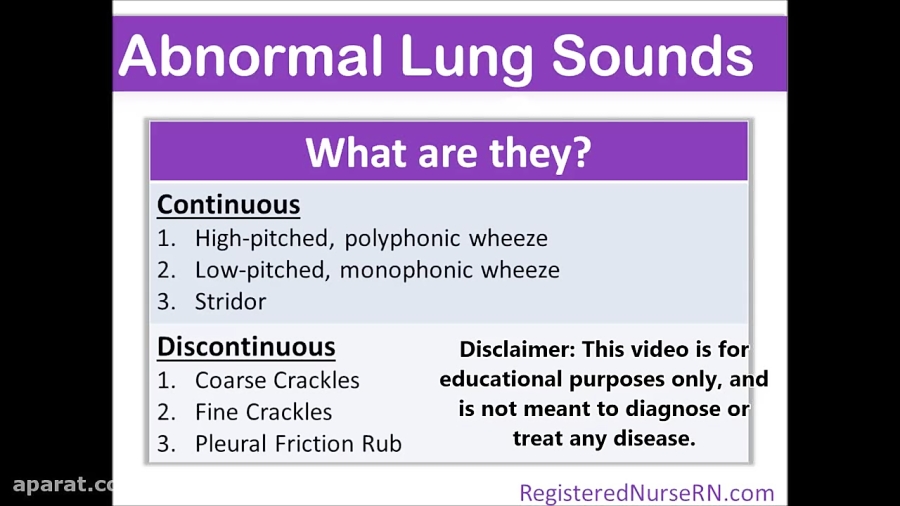

This signals that both lungs are working well. In a healthy person, breath sounds should always sound the same on both sides. For example, if a person has pneumonia, mucus can build up in their bronchi and the bronchi's airways, and cause rhonchi. Rhonchi are usually caused by mucus in the bronchi, the tubes that lead to the lungs. They may be heard only on one side, or in different spots on both sides. They do not always start at the bottom of the lungs. Rhonchi are often heard just in certain spots in the lungs.They are heard on both sides (in both lungs) together. Rales start at the bottom of the lungs and can be heard farther up as the patient gets sicker.Rhonchi are also called coarse crackles, because they sound like coarse, rattling, crackling sounds. As the pulmonary edema gets worse and fluid fills the lungs more, rales can be heard closer and closer to the top of the lungs.
Rhonchi lung sounds meaning professional#
When a medical professional listens to the lungs, rales usually start at the bottom of the lungs. Rales signals pulmonary edema, no matter what is causing that pulmonary edema. Blood clot in the lung (pulmonary embolism).Pneumonia or other infections in the lungs.Pulmonary edema may happen for many reasons, like: Rales are heard when a person has fluid in their lungs. Rales may also sound like bubbling, rattling, or small clicking sounds. They are heard when a person breathes in, on both sides (in both lungs). Rales are also called fine crackles, because they often sound like a fine crackling noise. They are also more likely to get childhood infections like croup or epiglottitis that can cause stridor. They are more likely to choke because their airways are smaller. No matter what the cause is, giving extra oxygen may also helpĬhildren are more likely to have stridor because of choking.Giving medicines to help the muscles in the airway or vocal cords relax.Treating the infection that is causing swelling in the larynx.Helping a person stop choking by using choke saving (like the Heimlich maneuver).Treatment for stridor depends on the cause: Like wheezing, stridor can signal a medical emergency if not enough oxygen is able to get through the airways. The muscles in the airway or vocal cords spasm (suddenly get tighter) this is called laryngospasm.A person has an infection, and swelling in the throat or airways blocks the larynx.A person is choking and an object is blocking the larynx.

Stridor is usually caused by something blocking the larynx (voice box). If the sound they hear is louder in the throat, it is stridor, not wheezing. Medical professionals can tell the difference by listening to the throat with a stethoscope. Stridor is a high-pitched sound that usually happens when a person breathes in. Bronchodilators can be given in inhalers or in a nebulizer (which mixes the medicine with warm water to make the medicine into steam). Albuterol is a very common bronchodilator and is carried on many ambulances. This reverses the cause of wheezing and makes it easier to breathe. There are medicines called bronchodilators that relax and open up the airways.

Emergency medical technicians or hospitals can also give humidified oxygen, which is mixed with warm water to make the oxygen into a warm steam. Sitting in an area like a shower, or using a vaporizer (which creates moist, warm air) may be helpful for mild wheezing.


 0 kommentar(er)
0 kommentar(er)
